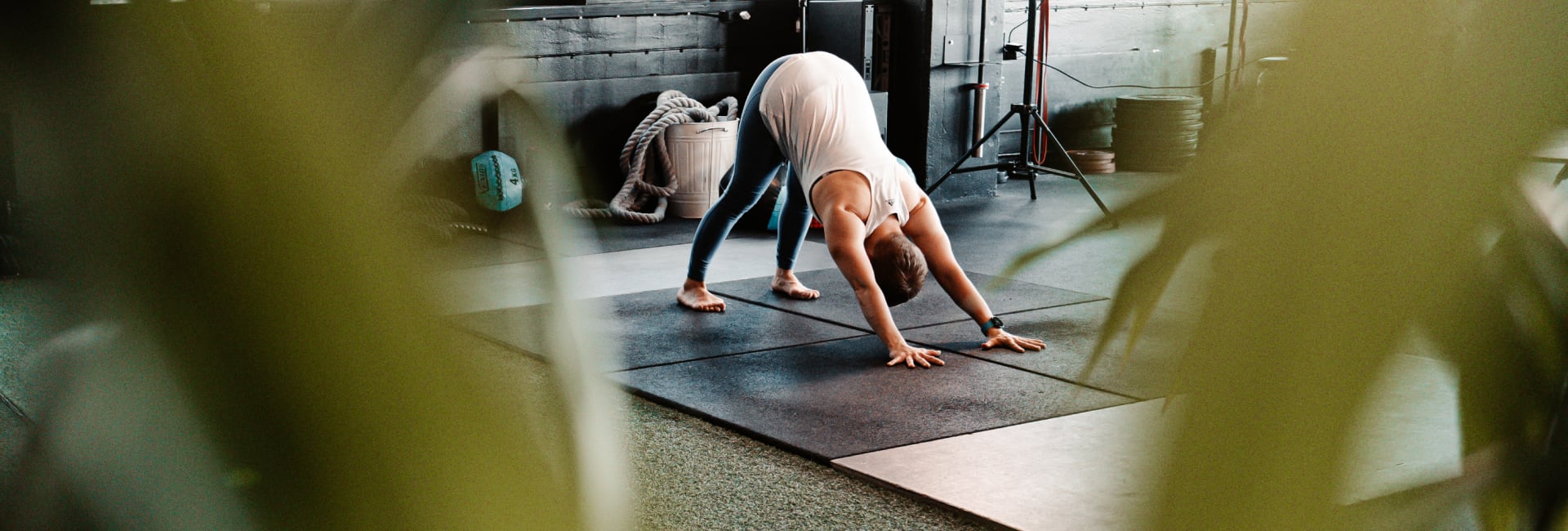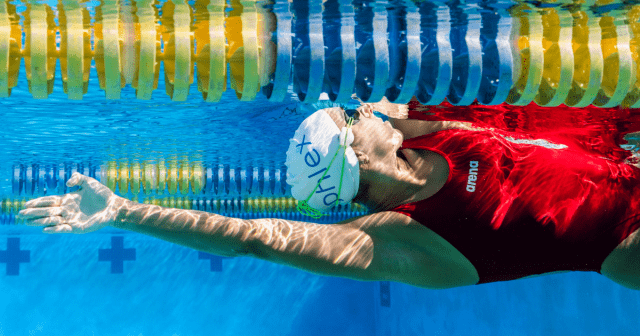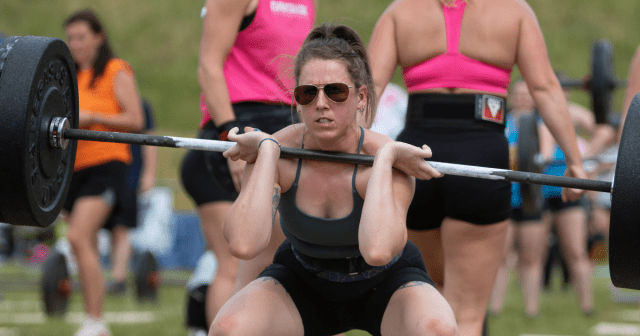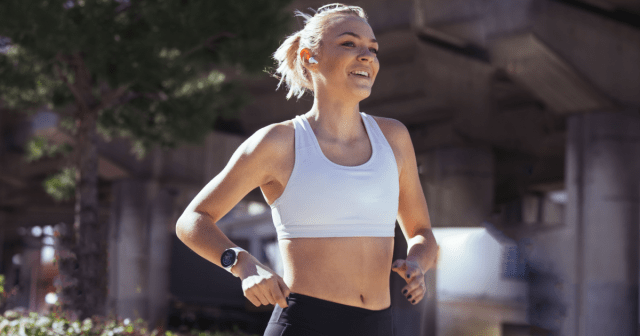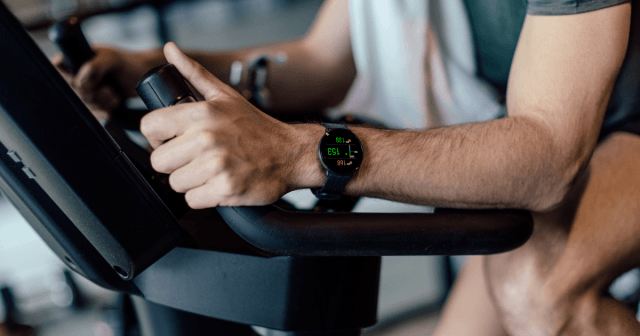I’ll admit my reasons for trying out hot yoga have not been entirely fitness related. Originating from the sunny climes of Sydney, Australia, I’ve always found the winters in the UK (where I now live) to be a feat of endurance. That said, I once wore a thermal on the summer solstice, so it’s fair to say I struggle with all the seasons here.
Hot yoga has been a solution I’ve used over the years when I’ve forgotten what it feels like to wear shorts. I often spend those few minutes before class lying down, imagining I’m on a beach, reminding myself what it is to feel warm. Of course, I could sit in a sauna and achieve the same effect, but while I’m not wrapped in five layers of clothing, I figure I may as well exercise.
WHAT IS HOT YOGA?
As the name suggests, hot yoga combines a Westernised yogic practice with increased temperatures. But exactly how hot are we talking about? Hot yoga rooms vary in humidity and are heated to anywhere from 80 to 108 °F (27 to 42 °C). Hence, the temperature gives me beach vibes – sans the risk of sunburn and without the ability to take a cooling dip.
Yoga, in its traditional form, originates from India, where it is a spiritual practice centered on experiencing oneness with the universe, with a range of holistic elements. In the West, it has been distilled into physical exercise, focusing on the body, mind, and breath, loosely informed by its philosophical origins.
Hot yoga was among the first ways many folks in the West were introduced to a yogic workout. The controversial ‘guru’ Bikram Choudhury (widely disgraced in the past decade) is credited with creating the concept. He left India in 1970 to begin teaching yoga in Japan but quickly realized that the climate difference impacted how people settled into each posture. So, Choudhury raised the temperature in the studio to replicate the heat of his home country.
When Choudhury arrived in Los Angeles in 1971, his series of 26 postures in a sauna-like 104 °F (40 °C) had become the template for what he branded Bikram Yoga. The physical transformation of this full-body workout quickly caught the attention of Hollywood royalty, popularizing it as an approach to fitness for decades to come.
What is a hot yoga class like?
As with most drafty European buildings, maintaining a consistent high heat is challenging for most hot yoga studios. That’s why I’m impressed by the setup at my local studio. Rather than heat the room, they’ve installed a hot ‘pod’ where each class takes place. Picture an inflatable chamber, not too dissimilar from being inside a bouncy castle, with a curated color scheme and lighting design. It’s an immersive sensory experience.
A hot one too. Every class is heated to 37 °C, which is fine when lying down, but once you start moving through Vinyasas, it becomes a little more challenging. For me, it’s the slow trickle of perspiration during a long-hold posture that I find the most disconcerting. There’s nothing like sweat dripping from your chin and nose to throw you off your balance in Warrior Three pose.
I’ve occasionally found what some people wear to an extremely hot yoga class amusing. Thonged swimwear is favored by some, who understandably want the smallest amount of fabric on their skin under these conditions. But this tends to be in classes that are 40°C+. In my ‘milder’ hot pod, people wear the more classic combo of shorts with a sleeveless top or sports bra. But hey, wear what you want. It’s all about being comfortable.
Types of hot yoga
Hot yoga has a broad meaning these days, describing any style of yoga performed in warm to sweltering conditions. Many have understandably distanced themselves from the Bikram name, which thankfully means less repetition of set yogic postures and a broader embracement of different teaching styles and skill levels.
This variation is illustrated by the classes offered at my local yoga studio. They have a Foundation Flow class, which offers a well-paced Vinyasa (or flowing) practice for newbies or those who like to take their time. It essentially means no quick transitions between the postures, which is what happens in their Hotpod Flow class. The slightly faster pace is what gets your heart rate going in such a hot environment.
For more experienced yogis, they offer a Dynamic Flow class that is all about tackling the more challenging poses and building the strength to not only get into a posture but to hold it. On the opposite end of the spectrum, they have a Nurturing Flow class for those who want to take things extra easy. Still, I get a lot out of this nourishing class as I gently move through a sequence of poses. It may not be as challenging, but it still feels like a great mobility practice.
Are there any dangers to hot yoga?
Another element to test your balance is the potential dizziness or lightheadedness the warm environment can cause. Many find this occurs during their first hot yoga class as they adjust to working out in the humidity. I remember being warned before my first attempt that pushing myself too hard and fast while guzzling down water could cause nausea. Better to take it easy and only take sips of fluids during the first twenty minutes of class.
That said, there is an increased risk of dehydration from hot yoga, so always ensure you’ve drunk plenty of water in the hours before each class. As your heart rate begins to rise in class, make sure you continue to sip water throughout. And remember, you should always hydrate before you even feel thirsty – thirst is a sign of dehydration. Heat exhaustion and heat stroke are also a concern, which means those with underlying health conditions should speak to their doctor before stripping off and jumping on a mat.
What are the benefits?
All of my classes are full, which means people must be motivated for reasons other than simply wanting to be warm. The benefits of hot yoga are, in fact, backed up by some interesting research. Researchers at Colorado State University, USA, found that the additional work required to regulate temperature and circulate more blood in a hot studio meant that this form of yoga burnt more than in a traditional class.
The heated environment means your muscles feel more limber and ready to take on the poses after warming up. It’s not uncommon to feel like you have a greater range of motion in a hot yoga class – just be careful not to push yourself too far. Regarding mobility, a separate study from the same university found that after eight weeks of hot yoga, you can expect the flexibility in your low back, shoulders, and hamstrings to improve significantly.
Bone density is another important benefit, especially for perimenopausal women. A five-year study by the University of Southern California, USA, found that women between 30 and 60 reduced their risk of osteoporosis by doing three weekly hot yoga classes. The highly disciplined, low-impact weight-bearing exercise with increased circulation, respiration, and perspiration helps protect the joints and preserve bone density.
Heart health is also boosted with hot yoga, as all your organs and muscles have to work a little harder in warmer conditions. A 2019 study from the Pontificia Universidad Católica de Chile found that hot yoga causes your heart rate to increase to a level similar to going for a brisk walk.
HEART RATE, HOT YOGA, AND RECOVERY
Using my Polar Ignite 3 in class, I can see my heart rate zones begin to zoom upwards quite quickly as I get into my flow. Looking at my recent training history on Polar Flow, I have briefly reached HR zone 4 in the more challenging classes but have spent most of my workouts in zones 2 and 3. Impressive, considering I rarely get to zone 2 in a traditional yoga class. Plus, a challenging hour-long class can often mean I complete my Daily Activity Goal before I’ve had my breakfast.
I have to remember that pushing myself this hard means I need to make time for muscle recovery. Adding heat to yoga can make this a high-intensity exercise, making our hearts work harder. It’s important to pay attention to your heart rate in challenging classes because we are only meant to exercise in HR zone 4 for a brief period of time.
Also, our bodies aren’t designed to do a high-intensity class every day, so it’s great I really appreciate that my local studio offers a range of styles so I can mix up my practice each day. A nourishing, gentle flow is exactly the type of active recovery I need after a class where I’ve powered from a yogic squat into a crow pose and then jumped out into a plank the previous day.
At the end of each hot yoga class, as I lay in my restorative Shavasana (relaxing on my back), I’m reminded of how icy my fingers and toes were when I entered the space. Now, the blood is gleefully pumping to my extremities as I enjoy being a warm, sweaty mess for at least another minute before I head out into the cold again.
If you liked this post, don’t forget to share so that others can find it, too.
Or give it a thumbs up!
I like this article
Please note that the information provided in the Polar Blog articles cannot replace individual advice from health professionals. Please consult your physician before starting a new fitness program.

